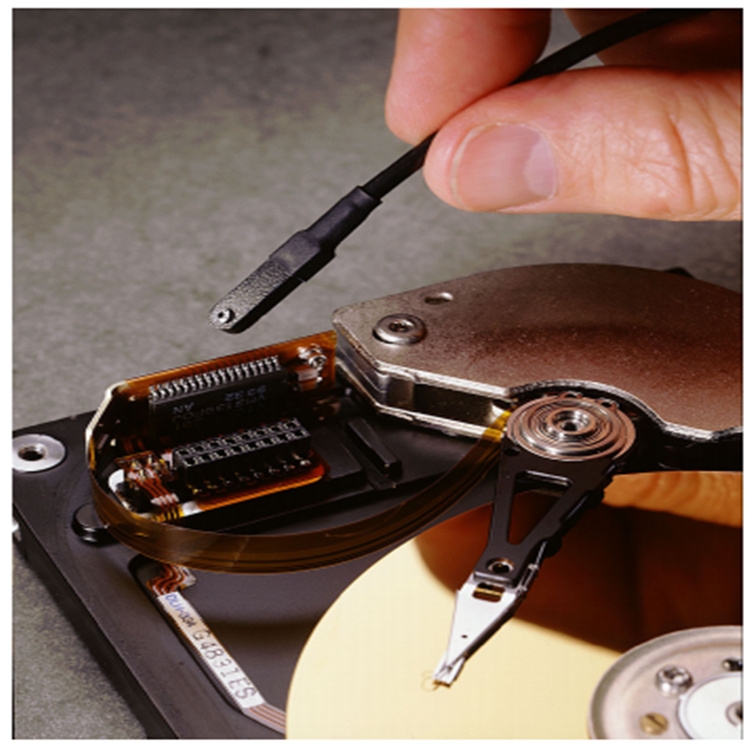
CT1 ? CT2 ? CT6 電流探頭
The CT6 is the newest addition to the Tektronix portfolio of high-frequency current probes. It is designed to meet the needs of high-speed circuit design and test applications which require ultra-high bandb, low inductance, and extremely small b factor. The CT6 provides up to 2 GHz bandb when used with high-bandb oscilloscopes such as the Tektronix TDS694C, TDS794D, and TDS7000 Series oscilloscopes or with other compatible 50 Ω b measuring instruments. Low inductance (
The CT1 and CT2 Current Probes are designed for permanent or semi-permanent in-circuit installation. Each probe consists of a current transber and an interconnecting cable. The current transbers have a small hole through which a current carrying conductor is passed during circuit assembly.
The P6041 Probe Cable provides the connection between the CT1 and CT2 Current Transbers and a BNC oscilloscope b. A 50 Ω termination is required to terminate the cable when connected to a high-impedance (1 MΩ) oscilloscope b. One probe cable can be used to monitor several current transbers that have been wired into a circuit.
The CT1 and CT2 detachable cable design enables one or more probes to be located on circuit boards or in other limited space areas.
The CT6 offers the smallest b factor available, for measurement on ever-shrinking circuit boards and components. It is designed for temporary installation and does not incorporate removable cables, as the CT1 and CT2 do.
Specified rise time and bandb are obtained when using the probe cables provided: The P6041 cable used with the CT1 and CT2 is 42 inches nominal. If additional length is required, the cables can be extended by using high-quality 50 Ω cable and suitable interface connectors. (Also see Special Probe Cables, Optional Accessories.) Long cables may degrade high-frequency response.
The CT1 and CT6 provide an output of 5 mV for each milliamp of b current when terminated in 50 Ω. The CT2 provides 1 mV per milliamp when terminated in 50 Ω.
The CT1, CT2, and CT6 high-frequency current transbers are dynamic (i.e., non-DC) current measuring devices. They are typically used in conjunction with compatible high-bandb oscilloscopes and other instruments to observe and/or record high-frequency current wavebs. The CT1, CT2, and CT6 normally operate directly into 50 Ω scopes and other measuring device bs.
The CT1 or CT2 can be used with 1 MΩ b systems; use the P6041 probe cable and terminate the output with a 50 Ω feed-through termination (see Optional Accessories).
In all cases, the CT1, CT2, and CT6 must work into 50 Ωs to obtain specified perbance and sensitivity.
Most true-differential voltage amplifiers have a maximum bandb of about 100 MHz. The CT1 or CT6 can make differential current measurements to 1 GHz and 2 GHz, respectively, by passing two wires carrying opposing currents through the same core. The displayed result is the difference current. The CT2 can perb the same function to 200 MHz.
In all cases, Derating with Frequency and Amp-second Product (Current-time Product) guidelines should not be exceeded. (See Characteristics.)
These common measurements are easy to make with the CT1, CT2, or CT6 provided that your signal fits within the Max Pulse Current and Amp-second Product (Current-time Product) guidelines for the specific current probe characteristics.
For example, the CT2 is rated at 36 A peak, with an Amp-second Product of 50 × 10-6 seconds (50 Amp-microseconds), therefore the CT2 can safely handle a 36 A peak pulse with a maximum b of 1.39 microseconds or lower amplitude pulses for longer pulse bs. The CT1, CT2, and CT6 all have low-frequency roll-off characteristics. Low-frequency "droop" will exhibit itself when the pulse b approaches the L/R time constant of the specific transber.
Two CT1 or CT2 Current Transbers with matching probe cables can be used to measure propagation delay (transit time) between the b and output currents of high-frequency devices. The probe outputs are connected to the bs of dual-channel real-time or sampling scopes.
Verification of any Probe/Cable/Scope System mismatch can be obtained by passing the same signal current through both probes and observing total system delay difference, if any.





